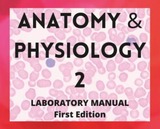
Laboratory manual for undergraduate Anatomy & Physiology 2
- Subject:
- Anatomy/Physiology
- Biology
- Health, Medicine and Nursing
- Material Type:
- Activity/Lab
- Reading
- Teaching/Learning Strategy
- Textbook
- Author:
- Julie Robinson
- Date Added:
- 07/30/2022

Laboratory manual for undergraduate Anatomy & Physiology 2

Teaching and learning resources for A&P 2. Please check back as I intend to add more.
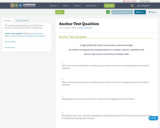
The questions provide guidance and reflection as educators choose anchor texts for collaboration.

Instructional sequences are more coherent when students investigate compelling natural phenomena (in science) or work on meaningful design problems (in engineering) by engaging in the science and engineering practices. We refer to these phenomena and design problems here as ‘anchors.’Here is a tool to assist in determining if the elements of the anchoring phenomenon are strong or could use some additional thinking. Original works can be found at NextGenStorylines.org

The ancillaries included in this site support the OER textbook Exploring Our Social World: The Story of Us, Interactive Workbook Edition. The following ancillaries are included for each chapter: Outlines, Slideshows, Reading Quizzes, Reading Quiz Answer Keys, Key Term Lists, Quizlet.com Flashcards and Kahoot.com Practice Questions.
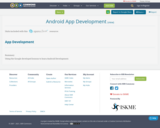
Using the Google developed lessons to learn Android Development.

The following is an OER focused on the technology tool, D2L.

See how one teacher helps students set goals, track progress, and use communication standards todrive lessons in the language class focused on proficiency.Angela Wagoner, Crete High School
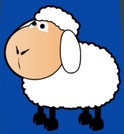
2nd Grades Unit 10 AnimalsOne can use EDPUZZLE to prepare some interactive activities for students. You can click the link below for an example; https://edpuzzle.com/media/64f6ca560712ca401d1d89ee

Sample template for creating a guidance document for educators visiting a particular website or playlist in the Arts. Remix and edit this resource to suit.

This is a collection of mini lectures created by anthropologists and those in conversation with anthropology as supplimental material to assist college and university instructors who were made to shift their courses online because of COVID19.For more information, see here.To contribute, please create an OER author account and send your name and OER registered email to AnthropologyTeaching@gmail.com.
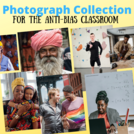
This collection was inspired by Ellen Wolpert's article about anti-bias work with younger students. Her article suggests that teachers should keep a collection of non-stereotypical photos of people doing regular things that can be referenced to stimulate class discussion or address biased language with young children.
The photos in this growing collection are organized into (Google Drive) folders inspired by categories mentioned by Ms. Wolpert: Race, Age, Physical Abilities, Gender Roles, Families/Sexual Orientation, Jobs, and Ethnicity. Each folder contains different photographs curated from various Creative Commons websites, including Unsplash, Pixabay, and Pexels. Currently there are 80 photographs in the collection. They have been assembled here for your convenience and represent many hours of searching, downloading, and editing.
Reference: Wolpert, E. (2006). Photo picture cards: A key tool for the anti-bias classroom. In Lee, E., Menkart, D., & Okazawa-Rey, M. (Eds.) Beyond heroes and holidays: A practical guide to K-12 anti-racist, multicultural education and staff development (3rd ed., pp. 211-214).

This infograph gives us an overview of the basic materials made of various polymers required to build a spacecraft.
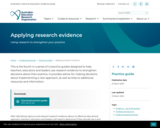
After identifying rigorous and relevant research evidence about an effective educational approach, teachers, educators and leaders will need to determine if they should use it and how to go about implementation. Deciding whether and how to apply research evidence in a school, service or learning environment is an ongoing process that involves careful reflection.
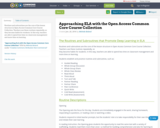
Routines and subroutines are the core of the lesson structure in Open Access Common Core Course Collection. Teachers use these routines repeatedly, so they become habits for students. In this way, teachers are able to spend less time on classroom management and more time on learning.
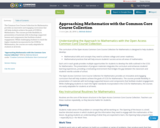
The Common Core Course Collection for Mathematics provides an innovative and engaging curriculum that will help students achieve the goals of CCSS for Mathematics. The courses provide flexibility in presentation of
materials with technology-supported lessons and components that facilitate student engagement. While challenging students to reach the higher standards incorporated in the CCSS for Mathematics, the courses are easily adaptable for students at all levels.
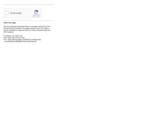
Nas últimas décadas percebeu-se uma ampla cobertura por parte da mídia dos assuntos relacionados ao
aquecimento global. Porém, apesar da grande veiculação de matérias a respeito do assunto, inúmeros estudos em vários países apontam que os alunos de diversos níveis de ensino e professores têm uma compreensão limitada sobre a natureza e as consequências do aquecimento global. Por outro lado, estudos também apontam uma deficiência no ensino e no aprendizado sobre a fotossíntese, uma reação bioquímica bastante complexa de extrema importância para a manutenção da vida em nosso planeta, que está diretamente relacionada ao sequestro de carbono e consequentemente a mitigação do aquecimento global.
Nesse contexto, o viveiro de mudas educador da Escola Bosque, localizado na Ilha de Caratateua, distrito de
Outeiro na cidade de Belém, cidade que segundo o IBGE tem o pior índice de arborização comparada a outras
cidades brasileiras, torna-se um espaço privilegiado para trabalhar uma sequência didática sobre fotossíntese,
sequestro de carbono e mitigação do aquecimento global, apoiada na habilidade de ciências (EF07CI13) da
base nacional curricular comum.
A sequência didática estrutura-se em cinco módulos, iniciando com a problematização no módulo 1;
entendendo os fenômenos no módulo 2; o módulo 3 é destinado aos experimentos no viveiro educador; o
módulo 4 trata da montagem de mapas conceituais e da avaliação; a forma de socialização é tratada no módulo 5, ultimo módulo da sequência didática.

This webpage displays a common conversation between three friends. The structure and topics of the conversation are purposefully general so as to be helpful to students' ability to create and sustain conversations of their own. The conversation includes Arabic text, transliteration, and translation.
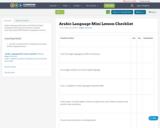
Arabic language mini lesson checklist from Qatar Foundation International's Summer Institute http://qfi.org/list/180/2/Arabic-Language-&-Culture

This paper speaks about Arabic and the problem of diglossia. In the paper, the author discusses the place of Arabic in the world of languages. The author also speaks about some of the aspects that make Arabic a difficult language to learn for speakers of Indo-European languages and discusses the problem of diglossia in modern Arabic. Ultimately, he makes a proposal on a possible way to teach Arabic that directly addresses the diglossia issue.